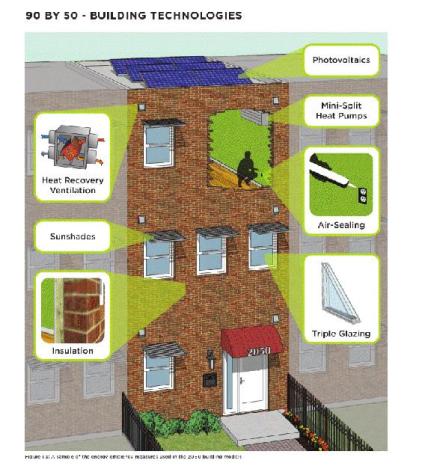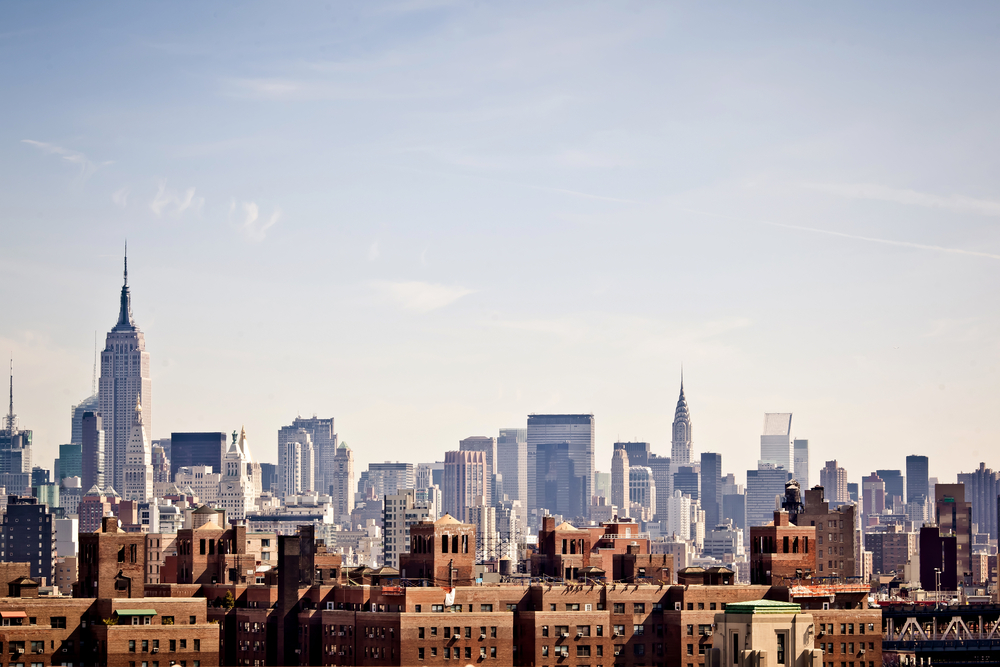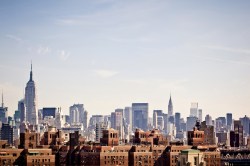Climate scientists have estimated that, in order to avoid runaway global warming, the world would need to cut its carbon emissions roughly in half by 2050. Since emissions in developing countries like China and India are still rising fast, meeting this target would require developed nations to aim for a figure more like 80 percent. When you consider that the United States, the largest polluter in the developed world, has no real strategy in place to achieve that — and that no binding international agreements appear to be on the horizon — the goal can start to sound nigh impossible.
The task is so intimidating that even serious people are starting to entertain extreme-sounding geoengineering ideas like flying business jets into the stratosphere and spraying sulfuric acid all over the place to try to deflect sunlight before it reaches the Earth. Others reckon it’s already too late to prevent catastrophic warming — we’ll have to build sea walls and hope for the best. President Obama alluded to a possible cap-and-trade system in Tuesday’s State of the Union address, but few believe such a sweeping policy would pass Congress.
Yet in a report released on Thursday, the nonprofit Urban Green Council makes the case that the country’s largest population centers needn’t rely on a federal breakthrough. Specifically, the 51-page report, titled “90 by 50,” finds that New York City could slash its emissions by a whopping 90 percent by 2050 without any radical new technologies, without cutting back on creature comforts, and maybe even without breaking its budget.
That’s a far more aggressive target than even the city’s own relatively ambitious goal of reducing emissions by 30 percent by 2030. How is it possible? The strategy has plenty of familiar components — electrifying the transit system, converting to renewable power sources. But it all hinges on one seemingly mundane yet surprisingly potent move: retrofitting almost every building in the city to keep the heat in during the winter and out during the summer. In a nod to Rudy Giuliani, Bill Bratton, and James Q. Wilson, I’ll call it the “triple-pane-windows theory” of greenhouse-gas reduction.
The report takes as its starting point this foundational statistic: 75 percent of the readily measured carbon emissions in New York City come from buildings. That makes it very different from the nation as a whole, where agriculture and transportation are among the biggest culprits. At first glance, this looks like an obstacle: Inefficient buildings are much harder to replace than inefficient cars. And New York is already one of the country’s greenest cities per capita, which would seem to make a 90 percent cut more difficult than it would be elsewhere.
But the council’s report suggests the opposite: that a dense metropolis like New York is well-suited to lead the way on emissions reductions. The key, says the Urban Green Council’s executive director, Russell Unger, is that the city must begin to view buildings as infrastructure, like roads and sewers, rather than simply as private property. “It will require a mind shift for the public and the government,” Unger says. “But you know, most of these buildings will last longer than the Tappan Zee Bridge.” And they gobble carbon-fueled energy like crazy.
To get those emissions under control will require three main steps, all difficult but none inconceivable. The first is probably the most ambitious and innovative: gradually retiring the city’s massive, aging steam heat system and replacing it with high-efficiency electric heat pumps. Low-rise residential buildings would get individual mini-split pumps, a relatively easy fix, while high-rises would need to convert from steam to central geothermal heat pump systems. That’s an expensive proposition, but it would also save staggering amounts of energy over time, with cost savings that would help offset the capital outlay. And the retrofits wouldn’t happen all at once — they’d be done as each building comes in for renovations that it would need anyway.

Urban Green CouncilA sample of the energy efficiency measures proposed in the Urban Green Council’s “90 by 50” report.
Heating the city’s buildings and water electrically would make it far easier to draw that energy from renewable sources. (The alternative is to run the steam system off biomass, but it’s not clear how feasible that would be.) The Urban Green Council’s report doesn’t prescribe exactly how New York should do that, but it’s a standard part of any serious carbon-cutting plan. Today the city gets about one-third of its electricity from natural gas and one-tenth from coal. The more it can replace those with nuclear, hydroelectric, wind, or solar power, the deeper the emissions cuts will be. Solar panels on every roof might be a nice supplement.
It’s the third step, though, that may make the above possible: energy conservation. Here, the report isn’t asking residents to cut back — it refers to stripping waste and leakage to the bare minimum. Tweaks that seem small — insulation, plugging air leaks, heat-recovery ventilation, fluorescent lighting — loom big. New buildings in the city already include some of those measures. But the Urban Green Council’s plans would carry these standards to unprecedented levels — not just double-glazed windows, but triple-glazed windows — and apply them to existing buildings as well whenever they’re updated. That’s an awful lot of work, but the potential payoff is bigger than you might expect. Think of how much a heater has to run just to keep a room at a constant 70 degrees on a 35-degree day — and then imagine instead that the room is so thoroughly sealed that it can stay near 70 for much of the day on its own.
It’s in service of this goal that the report makes one of the few suggestions that might raise New Yorkers’ hackles from a quality-of-life perspective: capping the percentage of see-through glass on high-rise buildings at 50 percent. That means that some would lose their perfect, unobstructed views. That’s in conflict with the city’s current development trends, says Dick Leigh, the Urban Green Council’s director of research. “People want buildings with huge expanses of glass. But no matter how good the glass is, it’s not going to be as good as an insulated wall.”
Why do insulation and air flow matter so much? Because without it, the city’s big transition from steam to heat pumps would drastically increase the load on the electrical grid, bringing huge additional costs. With it, the Urban Green Council believes the switchover could be accomplished with only a modest impact on total electricity consumption.
Even with all those changes to its buildings, the city would still need serious cuts in its emissions from transportation and waste to reach the grail of 90 percent by 2050. It’s not an easy number, no matter how it’s sliced. But Leigh notes that the transportation sector, which accounts for 21 percent of the city’s emissions today, may not be as hard a nut in New York City as it is elsewhere in the country. The city is already built for people without cars — fewer than half of New York households have one. That means that some relatively reasonable expansions and electrification projects could go a long way. Converting city buses to electric trolleys, as San Francisco has done, would also help.
All told, the council estimates that the measures in its report could get the city to the 90 percent target by 2050 at a cost on the order of $167 billion in 2012 dollars. That works out to about $5 billion per year, or about 0.4 percent of its gross municipal product. It sounds prohibitive, but the report also anticipates savings of $148 billion, which would reduce the net price tag to something more like $20 billion. The cleanup from Hurricane Sandy, meanwhile, is estimated to cost $50 billion.
It’s hard to believe these numbers are accurate. The cost of big infrastructure changes almost always soars far beyond projections. The report itself acknowledges that “there is something quixotic about estimating costs for a project that extends at least 37 years into the future.” Nor is it a sure thing that a 90-percent reduction in emissions would result even if all the recommendations are implemented.
But Unger, the council’s executive director, emphasizes that the report is not meant to be a precise blueprint. It doesn’t take into account political obstacles and makes no effort to identify specific policy options or funding sources. Instead, he says:
What we were trying to do here is address the almost despair that you see now among people who are concerned about global climate change. There’s been so much emphasis on legislation nationally and on international agreements. As those have fallen through, I think the worry has been, “Is there an alternative?” So what we wanted to study was, taking the goals we’ve heard, is this even doable? From a technical perspective, the answer we got was “yes.”
No doubt the “90 by 2050” mark is a long shot for New York, let alone the country as a whole. Yet at a time when big policy ideas like a carbon tax seem out of reach, the report makes a convincing case that it’s worth aiming high anyway, starting in the biggest cities, with technologies that are already available. In a rapidly urbanizing world, what works in New York might work a lot of other places, too. And if the worst-case scenario for tackling climate change is spending billions of dollars, missing the emissions target, and having a slightly less dazzling view from the top of the city’s luxury condos, well, that seems a lot more tolerable than the worst-case scenario for not tackling climate change.
 This story first appeared on Slate as part of the Climate Desk collaboration.
This story first appeared on Slate as part of the Climate Desk collaboration.




